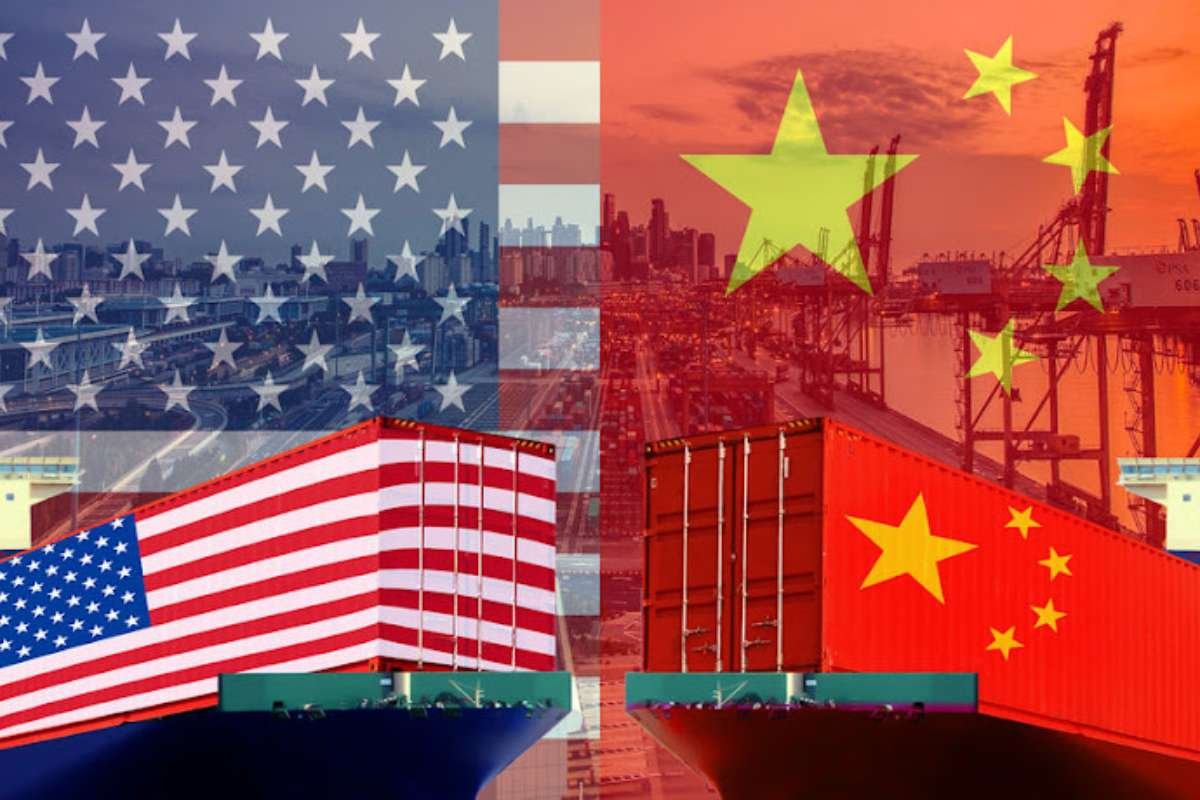Escalating Tariffs and Market Reactions
U.S. Trade Policies are causing a sharp reaction in financial markets, with the administration introducing sweeping tariffs and triggering global uncertainty. Six weeks into his second term, the U.S. president has imposed 25% tariffs on imports from Mexico and Canada, levied an additional 20% tariff on Chinese goods, and threatened reciprocal tariffs worldwide. The administration has also halted military aid to Ukraine, further unsettling global markets.
Initially, investors had expected rising bond yields and a stronger dollar, but these expectations have quickly dissipated. Instead, the “trade boom” effect has reversed, with the dollar falling and bond yields plunging. The escalating trade conflict has increased market volatility, prompting defensive shifts in investment strategies. Analysts from Goldman Sachs highlight that the average tariff rate on Chinese imports has now reached 34%, nearly double that of the previous term, with little hope for swift trade compromises.
Chang Wei Liang, a strategist at DBS, emphasized the difficulty investors face in positioning aggressively amid rapidly shifting tariff policies. Meanwhile, volatility indicators for U.S. Treasuries and Japanese stocks have hit their highest levels of the year, and implied volatility in currency markets continues to rise. As China announces retaliatory tariffs and North American trading partners prepare their responses, concerns over a global economic slowdown are mounting.
Sectoral Shifts and Investor Uncertainty
Amid rising tensions due to U.S. Trade Policies, key market sectors are reacting in contrasting ways. Investors are turning to defensive sectors, such as healthcare and real estate, perceiving them as safer amid heightened uncertainty. Steelmakers and other protected industries within the U.S. may benefit from these policies, but the broader supply chain is expected to experience price hikes with unpredictable outcomes.
Futures pricing indicates expectations of approximately 75 basis points in U.S. rate cuts this year, up from 50 basis points just two weeks ago, reflecting increasing investor concerns over slowing economic growth. The 10-year U.S. Treasury yield recently hit a four-and-a-half-month low of 4.115%, further demonstrating market apprehension.
Goldman Sachs CEO David Solomon, speaking at a conference in Australia, noted that business leaders are struggling to gauge the long-term effects of these policies. “I’m spending a lot of time talking to CEOs who are trying to understand the consequences,” Solomon stated. He warned that volatility is likely to persist as companies and investors navigate the evolving trade landscape.
Currency Markets in Turmoil
U.S. Trade Policies have caused notable upheavals in the foreign exchange market, with a significant downturn in the U.S. dollar. Investors who had built large long-dollar positions earlier in the year have now reversed their bets, leading to a rapid unwinding of positions. Against the euro, the dollar has dropped nearly 1% in just two trading sessions, coinciding with rising European yields as the region ramps up defense spending.
The White House has intensified its rhetoric against China and Japan, accusing them of maintaining undervalued currencies. However, market experts point out that the Chinese yuan remains historically strong against a basket of trading partners’ currencies, while Japan has actively intervened in recent years to prop up the yen.
Nomura’s global head of foreign exchange flow, Hoe Lon Leng, described the dollar’s decline as a significant shift in sentiment. “That argument is waning, and we keep seeing the price action move the other way,” he said, noting that if both China and the U.S. prefer a weaker dollar relative to the yuan, the downward trend is likely to continue.
Despite ongoing volatility, some analysts still hold out hope for trade negotiations and de-escalation measures. However, uncertainty looms large as investors grapple with rapidly evolving U.S. Trade Policies. With tariffs firmly in place, markets are adjusting to a new reality, forcing investors to recalibrate their expectations amid growing economic uncertainty.









